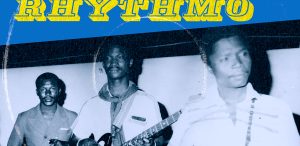
Rhythm of the Gods: a five track introduction to Orchestre Poly-Rythmo
Orchestre Poly-Rythmo are much more than a band. They’re a window into the culture of Benin and the music associated with the Vodoun traditions of West Africa. They’re also a reflection of the impact funk music made throughout the region, not to mention an enduring symbol of creative drive – having produced their early work during times of political and economic instability, managing to access the better-equipped EMI studio in Lagos to achieve the best sounding recordings possible.
When ‘personal, political, and cultural’ factors saw them slide into relative obscurity during the mid-eighties, their music may’ve been lost to the wider world, but thankfully people like journalist and producer Elodie Maillot and Analog Africa founder Samy Ben Redjeb have been able to fuel a resurgence in interest in the band. Not only that, they’ve been instrumental in bringing them to Europe, which considering they never left Africa during their first stint as a band, we’re fortunate to see happening! Original members Vincent Ahehehinnou, Gustave Bentho and Pierre Loko all feature in the current line-up, which visit Band on the Wall on 21st June, alongside a host of talented West African musicians. We’re looking forward to a special show and keen to bring you five great tracks as an introduction to the band and their work.
Orchestre Poly-Rythmo – Mi Ni Non Kpo
Over the course of several trips to Benin, Analog Africa founder Samy Ben Redjeb collected approximately 500 Orchestre Poly-Rythmo recordings! The group are said to have broken their exclusive contract to the label Albarika Store, making additional recordings in secret with independent labels in Cotonou and Porto Novo. This goes some way to explaining how they amassed so much recorded material and also explains why the tracks on The Vodoun Effect – Funk & Sato from Benin’s Obscure Labels 1972-1975 are grubbier than those on the Abarika label: because those sessions occurred in fairly amateur recording environments. Mi Ni Non Kpo is a vital track from the compilation, built around a Sakpata rhythm, which was used ritualistically to invoke the god of the same name. Its unison saxophone and distorted guitar riff is a joy to behold, while the distant rhythm and upfront vocals illustrate the contrast in fidelity achieved on these independently-made recordings. Sheer brilliance!
Orchestre Poly-Rythmo – La La La La
When the group released their album with Albarika Store, they were known as Orchestre Poly-Rythmo de Cotonou, occasionally with Dahomey (the old name of Benin and a historic kingdom in its Southern region) added too. Vincent Ahehehinnou was the group’s apparent leader – a vocalist influenced by Fela Kuti and his style of music and bandleading – and often featuring in name or image on the cover art. This debut album was done during a single session at EMI Lagos, although it was a second attempt, after unwanted organ hiss had deemed the original masters sub-par. La La La La opens the second side of the original LP, and features cool rock guitar in dialogue with the saxophone, plus a fantastic solo from troublesome Farfisa organ, tamed on these second takes.
Orchestre Poly-Rythmo – Lion Is Burning ft. Franz Ferdinand
With exposure in Europe came the opportunity for Orchestre Poly-Rythmo to collaborate with some of their new admirers. Franz Ferdinand drummer Paul Thomson and guitarist Nick McCarthy co-wrote this fresh and unruly afrobeat cut, which throws slide guitar and synths into the heady mix.
Orchestre Poly Rythmo de Cotonou Dahomey – Minsato Le, Mi Dayihome
Like Analog Africa, the Luaka Bop label have championed lesser-known African artists from the outset, bringing the music of the late William Onyeabor and Janka Nabay to wider attention. On their World Psychedelic Classics 3 compilation, they highlight Minsato Le, Mi Dayihome – a track with sophisticated rhythmic changes and an apparent James Brown influence, recognisable from Ahehehinnou’s howls. In Luaka Bop’s words, ‘innovators like Orchestre Poly-Ritmo…seemed to jump a generation by moving straight from boleros, cha chas and foxtrots to the heavily Latin influenced sounds of the Sahel.’ Truly innovative stuff indeed!
Orchestre Poly Rythmo de Cotonou Dahomey – Gbeto Vivi
Finally, a feel-good cut with a little Cuban son flavour. Gbeto Vivi features on the classic Poly-Rythmo ’76 vol. 1 album and encapsulates the genius of the band. Building upon a core groove of congas, drums and hand claps, the track is brimming with melodic and rhythmic ideas, but never cluttered. Every vocal phrase, horn line and chord sequence has its place, with quirks in the tuning and arrangement making it all the more authentic. Fans of Joni Haastrup, K. Frimpong and Afro National will fall in love with this track.







